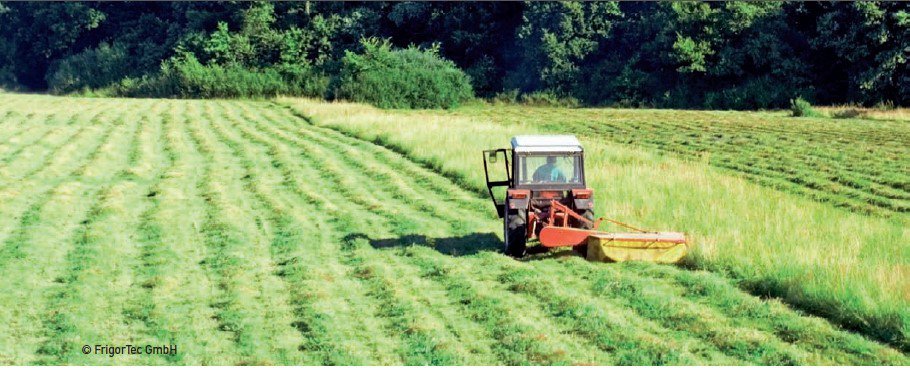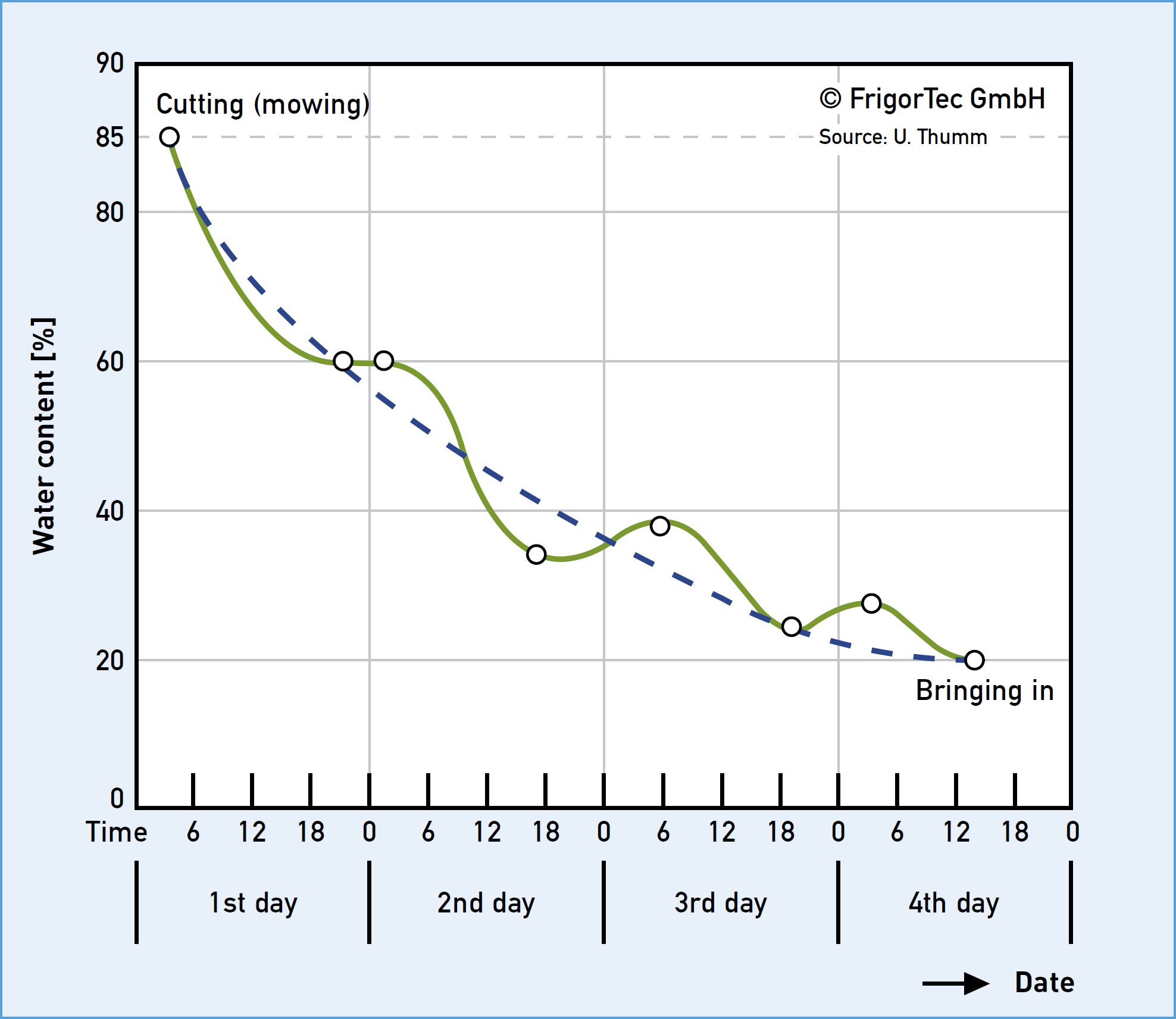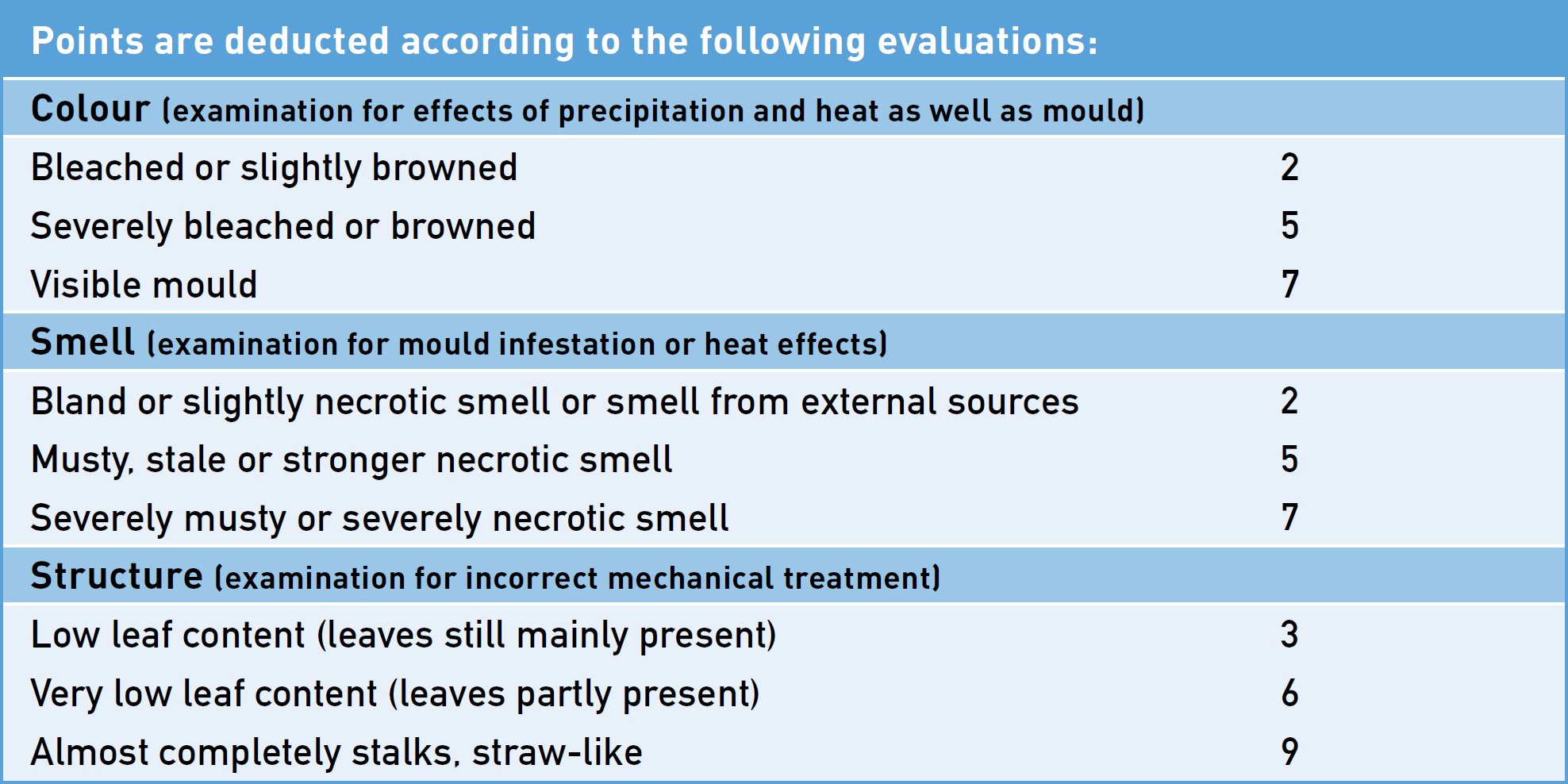Quality in quantity – professional hay and plant drying
Good hay quality is no coincidence, rather it comes from making the right decisions. There are clear definitions and guidelines that go into evaluating hay quality. We cannot influence weather conditions, so the use of a technical hay drying plant is nowadays indispensable for a high quality hay yield.
A good meadow is the basis for good hay
Even the best drying method cannot significantly improve hay quality if the basis is not right. A good meadow with grasses, clover and meadow herbs is, in addition to the optimal cutting time, the most important basic prerequisite for good hay quality with a high protein content and energy density. There are around 3,000 different meadow plants in Central Europe. About 1,000 plant species are relevant for animal feeding. The plant species are basically divided into three groups: grasses, legumes, and herbs. The grasses include sweet grasses and sour grasses such as cocksfoot, golden oats, meadow fescue and meadow foxtail. Due to their high protein and mineral content, clovers are among the most important sources of animal feed. The most important examples of the clover species - which as a subfamily of the papilionaceous plants come from the legume family - are red clover, white clover, horn clover, Persian clover and Alexandrian clover. In the third large group, namely herbs, a distinction is made between herbs, weed plants and weeds. With herbs in particular, care must be taken to ensure gentle drying in order to preserve valuable ingredients such as essential oils, tanning agents, flavanoids, saponins and bitter substances. Here, we recommend a drying process using a heat pump, as the drying air can be adjusted very precisely to the existing herb temperature.

Good drying begins with the haymaking
During haymaking on the field, the tedding and raking must be done properly. This is true for the respective point in time, and for the speed or rotational speed settings. Studies by Kassel University show that the optimal speed for tedding and turning is 6 to 7 km/h. Too many turning operations increase flake losses and reduce the dry matter. With each turn, approx. 8 to 10 % of the dry matter is lost. If the cuttings have a dry matter content of 85%, over 16% of this dry matter can be lost through raking. In order to protect the turf, avoid fodder contamination, and significantly reduce losses, the cuttings should not be cut deeper than 7 cm from the ground. A further advantage with sufficient stubble height: The cuttings do not lie directly on the ground and can therefore dry better and faster. This is particularly relevant when the ground is damp.

Water content evaluation of hay
Pre-drying (wilting) in the field is important
Freshly cut green fodder contains about 80% water, i.e. only 20% dry matter. After a day of drying under the sun in the field, the water content is still about 40%, i.e. the dry matter content is about 60%. With a dry matter content of 60% to 70%, the wilted grass can be carried into the drying box or hay box.

Moisture development during field drying
Proof of good hay quality
Colour, odour, structure, degree of soiling and energy concentration: The Bavarian State Research Centre for Agriculture (LfL) has established clear criteria for assessing hay quality. High-quality hay has an olive-green colour (light green to dark green), has an aromatic odour (no burnt odour, no other type of odour, not musty) and contains leaf parts (corresponding to the original material). In order to judge the success of preservation, the best fodder quality of the green cuttings is assumed, with deductions made according to the following evaluation.

* Values apply to field-dried hay.
In the case of aerated hay, the losses are lower by 0.2 to 0.3 MJ NEL/kg DM
ME = metabolic (utilisable) energy
NEL = net-energy lactation (lactation = milk production)
Hay as an economic factor
Be it through insufficient or incorrect hay drying: Year after year, many tonnes of hay can only be used as litter because it is too inferior for use as animal feed. Hay drying in round bales also plays a role in this problem. Basically, the hay quality achieved by loose drying is not possible with round bales. This is mostly down to the unequal counter-pressure conditions within a bale ("cushion"). In addition, the fans used for round bale drying must generate a higher pressure than for loose hay. This results in greater energy consumption and higher costs. An additional cost factor: If the quality and quantity of hay is reduced, farmers need more concentrated feed and protein concentrated feed as an alternative. This also shows that investing in a modern hay drying plant pays off in the long run.
Our products
More know-how articles
Technical hay drying and its advantages
Better planning and quality assurance, more flexibility, independence from weather conditions, less risk of fire, and increased profitability: There are numerous reasons why farmers and operating companies invest in ultra-modern technical hay drying plants, with heat pump, and air dehumidifier.
Designed to meet requirements as the basis for economical hay drying
Hay drying plants can be integrated into new buildings as well as into existing barns. In order for farmers to fully exploit the advantages of effective and at the same time energy-efficient hay drying, numerous individual factors must be taken into account when designing the plant.
How hay quality affects animal health
Anyone who keeps farm animals knows the relationship between good hay and general animal health. Good hay stimulates ruminant animals, e.g., cows and goats to ruminate. It promotes grazing behaviour with the rumen, prevents metabolic diseases, and has a positive effect on milk yield and quality.
Arrange a consultation appointment
Our experts will be happy to advise you on the planning and implementation of your projects. Together we will find a perfect customised solution.
Arrange an appointment